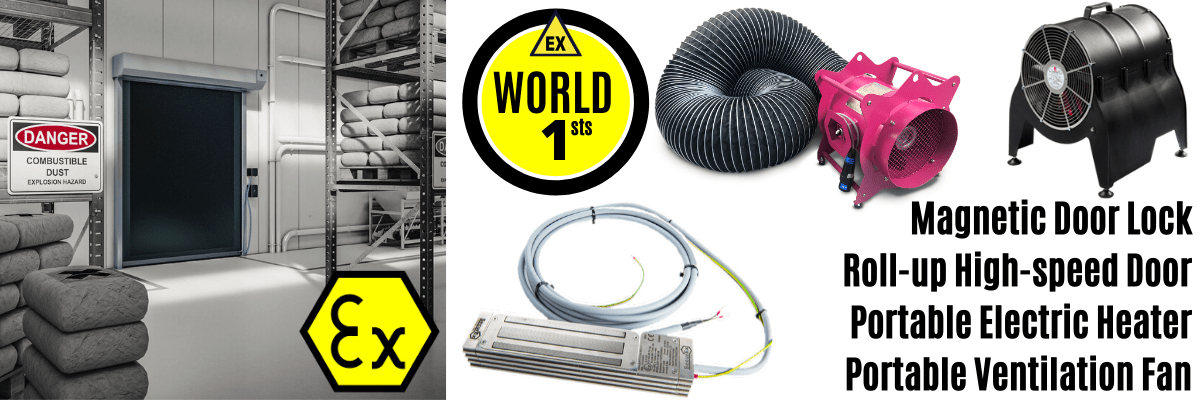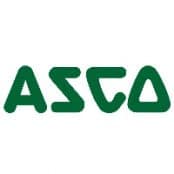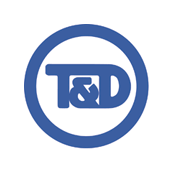Temperature T Class Ratings
T Class Ratings
Hazardous Areas
Temperature Classifications are given to hazardous area Temperature Class Ratings (also known as T-ratings or T-Class) and are applied to hazardous area zones and electrical equipment – T Class Ratings are utilised for all hazardous areas and explosion protection methods.
This helps the user to quantify the level of thermal energy allowed in the hazardous area area or explosive atmosphere according to the ATEX Directive or produced by the hazardous area equipment.
Thorne & Derrick | Experts in Electrical Equipment for Explosive Atmospheres & Hazardous Areas | Contact us with your Enquiry | Product Innovation & Competitive Solutions | ATEX & IECEx Compliance | UK & Exports Sales Departments

THORNE & DERRICK | Hazardous Area Electrical, HVAC & Process Instrumentation Equipment | UK & International Projects
ATEX
A hazardous area can be defined according to the ATEX Directive as any location where there is risk of an explosion due to the presence of flammable gas and vapours.
However it is important to remember that every hazardous area is different and each has specific requirements depending on the nature of the atmosphere and the elements that are present.
Flammable materials have a temperature at which ignition will take place, even in the absence of an external source. The ignition temperature is the lowest temperature on the surface at which an explosive atmosphere will ignite.
Apparatus must be selected so that it will not expose a gas-air mixture to a temperature exceeding its ignition temperature.
This is achieved by Temperature Classification, the T-Class.
Gases and dusts have been divided into temperature classes according to their ignition temperatures so that electrical equipment can be further sub-divided into six temperature classes T1 to T6.
Note. The maximum operating surface temperature of a piece of electrical equipment must always be below the ignition temperature of the explosive mixture.
Gas Classification & Explosion Groups
Group I : hazardous area electrical equipment intended for use in the underground parts of mines, and to those parts of surface installations of such mines, likely to become endangered by firedamp and/or combustible dust.
Group II : hazardous area electrical equipment intended for use in other places likely to become endangered by explosive atmospheres (surface industries).
For the types of protection “d” and “i”, group II is subdivided into IIA, IIB, IIC.
Electrical apparatus certified for IIB may be used in applications requiring apparatus to be certified for group IIA.
Electrical apparatus certified for IIC may be used in applications requiring apparatus to be certified for groups IIA and IIB.
For example the “d” and “i” types of explosion protection are respectively subdivided according to the Maximum Experimental Safe Gap (MESG) and to the Minimum Igniting Current (MIC). Electrical apparatus certified for IIB may be certified for use with a gas belonging to group IIC.
In this case, the identification is supplemented with the chemical symbol or the name of the gas (example: Ex d IIB + H2 according to EN 60079-0 and EN 60079.1). The table below indicates the groups to which some gas mixtures belong:
| Groups |
Gas | Ignition Temperature °C |
Temperature Class | ||||||
| T1 | T2 | T3 | T4 | T5 | T6 | ||||
| I | methane (firedamp) | ||||||||
| II |
A | acetone | 540 | ♦ | |||||
| acetic acide | 485 | ♦ | |||||||
| ammonia | 630 | ♦ | |||||||
| ethane | 515 | ♦ | |||||||
| methylene chloride | 556 | ♦ | |||||||
| methane (CH4) | 537 | ♦ | |||||||
| carbon monoxide | 605 | ♦ | |||||||
| propane | 470 | ♦ | |||||||
| n-butane | 365 | ♦ | |||||||
| n-butyl | 370 | ♦ | |||||||
| n-hexane | 240 | ♦ | |||||||
| acetaldehyde | 140 | ♦ | |||||||
| ethyl ether | 160 | ♦ | |||||||
| ethyl nitrate | 90 | ♦ | |||||||
| B |
ethylene | 425 | ♦ | ||||||
| ethyl oxyde | 429-440 | ♦ | |||||||
| hydrogen sulfide | 270 | ♦ | |||||||
| C |
acetylene (C2H2) | 305 | ♦ | ||||||
| carbon disulphide (CS2) | 102 | ♦ | |||||||
| hydrogen (H2) | 560 | ♦ | |||||||
Ignition Temperature
Temperature of a hot surface able to ignite a gas mixture. The ignition temperature of the gas mixture must be higher than the maximum surface temperature. In practice, a 10 to 20% safety margin is observed between the ignition temperature and the rated nameplate temperature. The ignition temperature of a cloud of dust is generally between 300 and 700°C. At 150 to 350°C, the ignition temperature of a layer of dust is far below that of a dust cloud. A burning dust layer can initiate a dust explosion if brought in contact with a combustible dust cloud, so these values must be taken into account to limit the risk.
Group II Hazardous Areas & T Class Ratings
Explosion protected electrical apparatus must be designed and tested to ensure that the maximum surface temperature of any part(s) of the products are below the ignition temperature of the explosive atmosphere concerned. Hazardous area Group II electrical apparatus is divided into temperature classes according to the maximum permissible surface temperature of the apparatus. The preferable classification of temperatures is provided below. Unless otherwise specified the maximum ambient temperature is taken to be 400ºC.
Temperature Class
Maximum Surface Temperature °C
Temperature Classification is based on the maximum temperature which any relevant part of the equipment which may be in contact with a flammable (explosive) gas, can reach.
This classification identifies the minimum ignition temperature threshold for the hazardous area. In other words, in order for the explosive or combustible environment to ignite, it would need to be subjected to a temperature in excess of this value.
The values applied to this T-Class classification run from T1 to T6.
- T1 Class 450ºC
- T2 Class 300ºC
- T3 Class 200ºC
- T4 Class 135ºC
- T5 Class 100ºC
- T6 Class 85ºC
Relationship between ‘T’ class and the maximum permissible temperature in °C of any surface in contact with flammable gas or ignitable dust. Based on – 20ºC to + 40ºC ambient air temperature.
A classification of T1 means the minimum ignition temperature is >450° C [842° F]. A classification of T6 means the minimum ignition temperature is >85° C [185° F].
T Rating Equipment
Hazardous area electrical equipment maybe designed for use in higher ambient temperatures. This would indicated on the rating plate e.g. EExe II C T3 Ta + 60°C (This means at 60ºC ambient T3 will not be exceeded)
| Gas Area Classified T Rating | Suitable Equipment |
| T1 | T1, T2, T3, T4, T5, T6 |
| T2 | T2, T3, T4, T5, T6 |
| T3 | T3, T4, T5, T6 |
| T4 | T4, T5, T6 |
| T5 | T5, T6 |
| T6 | T6 |
A T Class rating of T1 means the maximum surface temperature generated by the instrument at 40° C is 450° C. A rating of T6 means the maximum surface temperature generated by the equipment is 85° C.
Assuming the associated T Class and Temperature rating for the equipment are appropriate for the area, you can always use an instrument with a more stringent Division rating than required for the area.
Is it possible to field repair equipment with a hazardous rating?
There isn’t a clear answer to this question unfortunately. It really does depend on the type of equipment and what repairs need to be carried out. Generally hazardous area equipment repairs fall into three basic categories.
- Factory Repair Only: Equipment with specific test procedures that can’t be performed in the field in order to achieve/maintain third party rating. Must come back to the factory if it is prior to the equipment’s service.
- Field Repair By Authorised Personnel: Complicated testing may not be required however specific procedures may need to be followed in order for the equipment to maintain its third party rating. End user shouldn’t be instructed on how to perform this work. Authorised personnel must be employed to perform the work correctly
- Field Repair By The End User: Repair must be a like for like replacement. New component must be considered as a direct replacement requiring no special testing of the equipment after the repair is complete.
Each piece of equipment with a hazardous rating should be evaluated independently.
Typical Self Ignition Temperatures
for Gases Temp + °C
| Gas | Temperature |
| Butane | 287ºC |
| Ethyl Acetate | 425ºC |
| Acetylene | 300ºC |
| Carbon Disulphide | 90ºC |
| Hydrogen | 500ºC |
| Acetone | 465ºC |
| Ammonia | 650ºC |
| Ethyl Nitrate | 90ºC |
| Benzene | 498ºC |
| Industrial Methane | 535ºC |
| Carbon Monoxide | 605ºC |
Typical Self Ignition Temperatures
for Dust, Temp + °C – Cloud – Layer
| Dust | Temperature (Cloud) | Temperature (Layer) |
| Cellulose | 490ºC | 430ºC |
| Cocoa | 500ºC | 200ºC |
| Flour | 490ºC | 430ºC |
| Lead | 460ºC | 240ºC |
| Lignite | 380ºC | 225ºC |
| Polyacrylonitrate | 540ºC | 400ºC |
| Soya Meal | 540ºC | 340ºC |
| Zinc | 570ºC | 440ºC |

EXPERTS IN EQUIPMENT FOR EXPLOSIVE ATMOSPHERES
leaders in ATEX Innovation To The Hazardous Area Industries
Thorne & Derrick are leaders in the development and distribution of Product Innovations that deliver significant improvements to clients plant, people and operational safety in the explosive atmosphere industries.
Your proactive problem solvers experienced in succession planning for the replacement of obsolete, non-conformant and legacy equipment in hazardous areas.
Your first-choice provider of innovative and competitive solutions to ensure ATEX & IECEx Compliance for Hazardous Area Electrical, HVAC & Process Instrumentation Equipment to UK and international projects.
Control Panels | Plugs | Isolators | Enclosures & Junction Boxes | Lighting | Control Stations | Motor Starters | Heat Trace | Gas Detection | Flame Detection | Process Instrumentation | Process Heating | Ventilation Fans | Security Access Control

Competitive Prices | Extensive Stocks | Technical Support | Express Delivery








